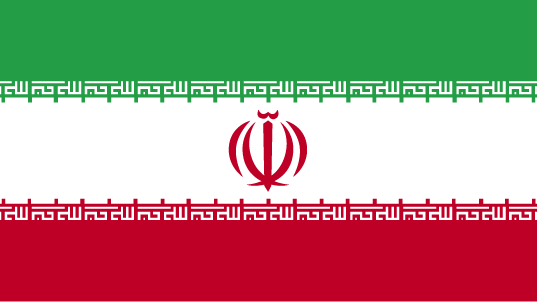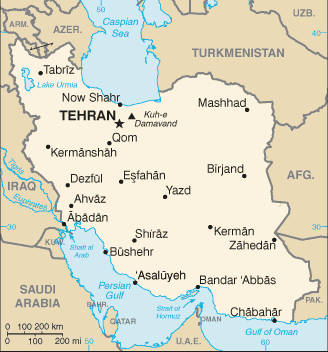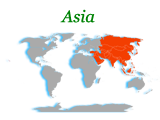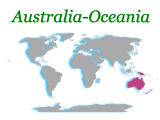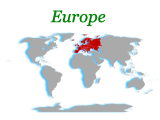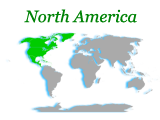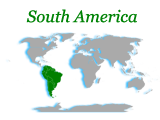Known as Persia until 1935, Iran became an Islamic republic in 1979 after the ruling monarchy was overthrown and Shah Mohammad Reza PAHLAVI was forced into exile. Conservative clerical forces established a theocratic system of government with ultimate political authority vested in a learned religious scholar referred to commonly as the Supreme Leader who, according to the constitution, is accountable only to the Assembly of Experts - a popularly elected 86-member body of clerics. US-Iranian relations have been strained since a group of Iranian students seized the US Embassy in Tehran on 4 November 1979 and held it until 20 January 1981. During 1980-88, Iran fought a bloody, indecisive war with Iraq that eventually expanded into the Persian Gulf and led to clashes between US Navy and Iranian military forces between 1987 and 1988. Iran has been designated a state sponsor of terrorism for its activities in Lebanon and elsewhere in the world and remains subject to US, UN, and EU economic sanctions and export controls because of its continued involvement in terrorism and its nuclear weapons ambitions. Following the election of reformer Hojjat ol-Eslam Mohammad KHATAMI as president in 1997 and a reformist Majles (legislature) in 2000, a campaign to foster political reform in response to popular dissatisfaction was initiated. The movement floundered as conservative politicians, through the control of unelected institutions, prevented reform measures from being enacted and increased repressive measures. Starting with nationwide municipal elections in 2003 and continuing through Majles elections in 2004, conservatives reestablished control over Iran's elected government institutions, which culminated with the August 2005 inauguration of hardliner Mahmud AHMADI-NEJAD as president. His controversial reelection in June 2009 sparked nationwide protests over allegations of electoral fraud. The UN Security Council has passed a number of resolutions (1696 in July 2006, 1737 in December 2006, 1747 in March 2007, 1803 in March 2008, and 1835 in September 2008) calling for Iran to suspend its uranium enrichment and reprocessing activities and comply with its IAEA obligations and responsibilities. Resolutions 1737, 1477, and 1803 subject a number of Iranian individuals and entities involved in Iran's nuclear and ballistic missile programs to sanctions. Additionally, several Iranian entities are subject to US sanctions under Executive Order 13382 designations for proliferation activities and EO 13224 designations for support of terrorism.
Population
67,037,517 (July 2010 est.)
Country comparison to the world:19
Nationality
Noun:Iranian(s)
Adjective:Iranian
Ethnic groups
Persian 51%, Azeri 24%, Gilaki and Mazandarani 8%, Kurd 7%, Arab 3%, Lur 2%, Baloch 2%, Turkmen 2%, other 1%
Religions
Muslim 98% (Shia 89%, Sunni 9%), other (includes Zoroastrian, Jewish, Christian, and Baha'i) 2%
Languages
Persian and Persian dialects 58%, Turkic and Turkic dialects 26%, Kurdish 9%, Luri 2%, Balochi 1%, Arabic 1%, Turkish 1%, other 2%
Country Name
Conventional long form:Islamic Republic of Iran
Conventional short form:Iran
Local long form:Jomhuri-ye Eslami-ye Iran
Local short form: Iran
Former:Persia
Government Type
theocratic republic
Capital
Name:Tehran
Geographic coordinates:35 40 N, 51 25 E
Time difference:UTC+3.5 (8.5 hours ahead of Washington, DC during Standard Time)
daylight saving time: +1hr, begins fourth Monday in March; ends fourth Wednesday in September
Administrative divisions
30 provinces (ostanha, singular - ostan); Ardabil, Azarbayjan-e Gharbi, Azarbayjan-e Sharqi, Bushehr, Chahar Mahal va Bakhtiari, Esfahan, Fars, Gilan, Golestan, Hamadan, Hormozgan, Ilam, Kerman, Kermanshah, Khorasan-e Jonubi (North Khorasan), Khorasan-e Razavi (Razavi Khorasan), Khorasan-e Shomali (South Khorasan), Khuzestan, Kohgiluyeh va Bowyer Ahmad, Kordestan, Lorestan, Markazi, Mazandaran, Qazvin, Qom, Semnan, Sistan va Baluchestan, Tehran, Yazd, Zanjan
Independence
1 April 1979 (Islamic Republic of Iran proclaimed)
National Holiday
Republic Day, 1 April (1979)
Constitution
2-3 December 1979; revised in 1989
note: the revision in 1989 expanded powers of the presidency and eliminated the prime ministership
Legal system
based on sharia law system; has not accepted compulsory ICJ jurisdiction
Suffrage
18 years of age; universal
Executive branch
Chief of state:Supreme Leader Ali Hoseini-KHAMENEI (since 4 June 1989)
Head of government:President Mahmud AHMADI-NEJAD (since 3 August 2005); First Vice President Mohammad Reza RAHIMI (since 13 September 2009)
Cabinet:Council of Ministers selected by the president with legislative approval; the Supreme Leader has some control over appointments to the more sensitive ministries
(For more information visit the World Leaders website)
note: also considered part of the Executive branch of government are three oversight bodies: 1) Assembly of Experts (Majles-Khebregan), a popularly elected body charged with determining the succession of the Supreme Leader, reviewing his performance, and deposing him if deemed necessary; 2) Expediency Council or the Council for the Discernment of Expediency (Majma-e-Tashkhis-e-Maslahat-e-Nezam) exerts supervisory authority over the executive, judicial, and legislative branches and resolves legislative issues on which the Majles and the Council of Guardians disagree and since 1989 has been used to advise national religious leaders on matters of national policy; in 2005 the Council's powers were expanded to act as a supervisory body for the government; 3) Council of Guardians of the Constitution or Council of Guardians or Guardians Council (Shora-ye Negban-e Qanon-e Asassi) determines whether proposed legislation is both constitutional and faithful to Islamic law, vets candidates in popular elections for suitability, and supervises national elections
Elections:Supreme Leader appointed for life by the Assembly of Experts; president elected by popular vote for a four-year term (eligible for a second term and third nonconsecutive term); election last held on 12 June 2009;(next presidential election slated for June 2013)
Election results:Mahmud AHMADI-NEJAD reelected president; percent of vote - Mahmud AHMADI-NEJAD 62.6%, Mir-Hosein MUSAVI-Khamenei 33.8%, other 3.6%; voter turnout 85% (according to official figures published by the government)
Legislative branch
unicameral Islamic Consultative Assembly or Majles-e-Shura-ye-Eslami or Majles (290 seats; members elected by popular vote to serve four-year terms)
Elections: last held on 14 March 2008 with a runoff held on 25 April 2008 (next to be held in 2012)
Election results:percent of vote - NA; seats by party - conservatives/Islamists 167, reformers 39, independents 74, religious minorities 5, other 5
Judicial branch
The Supreme Court (Qeveh Qazaieh) and the four-member High Council of the Judiciary have a single head and overlapping responsibilities; together they supervise the enforcement of all laws and establish judicial and legal policies; lower courts include a special clerical court, a revolutionary court, and a special administrative court
Political Parties and Leaders
formal political parties are a relatively new phenomenon in Iran and most conservatives still prefer to work through political pressure groups rather than parties; often political parties or coalitions are formed prior to elections and disbanded soon thereafter; a loose pro-reform coalition called the 2nd Khordad Front, which includes political parties as well as less formal groups and organizations, achieved considerable success in elections for the sixth Majles in early 2000; groups in the coalition included the Islamic Iran Participation Front (IIPF), Executives of Construction Party (Kargozaran), Solidarity Party, Islamic Labor Party, Mardom Salari, Mojahedin of the Islamic Revolution Organization (MIRO), and Militant Clerics Society (Ruhaniyun); the coalition participated in the seventh Majles elections in early 2004; following his defeat in the 2005 presidential elections, former MCS Secretary General and sixth Majles Speaker Mehdi KARUBI formed the National Trust Party; a new conservative group, Islamic Iran Developers Coalition (Abadgaran), took a leading position in the new Majles after winning a majority of the seats in February 2004; following the 2004 Majles elections, traditional and hardline conservatives have attempted to close ranks under the United Front of Principlists and the Broad Popular Coalition of Principlists; several reformist groups, such as the Mujahadin of the Islamic Revolution, came together as a reformist coalition in advance of the 2008 Majles elections; the IIPF has repeatedly complained that the overwhelming majority of its candidates have been unfairly disqualified from the 2008 elections
Political pressure groups and leaders
groups that generally support the Islamic Republic: Ansar-e Hizballah-Islamic Coalition Party (Motalefeh); Followers of the Line of the Imam and the Leader; Islamic Engineers Society; Tehran Militant Clergy Association (Ruhaniyat); active pro-reform student group: Office of Strengthening Unity (OSU); opposition groups: Baluchistan People's Party (BPP); Freedom Movement of Iran; Green Path Movement [Mehdi KARUBI, Mir-Hosein MUSAVI]; Marz-e Por Gohar; National Front; and various ethnic and Monarchist organizations; armed political groups that have been repressed by the government: Democratic Party of Iranian Kurdistan (KDPI); Jundallah; Komala; Mujahedin-e Khalq Organization (MEK or MKO); People's Fedayeen; People's Free Life Party of Kurdistan (PJAK)
International organization participation
CICA, CP, D-8, ECO, FAO, G-15, G-24, G-77, IAEA, IBRD, ICAO, ICC, ICCt (signatory), ICRM, IDA, IDB, IFAD, IFC, IFRCS, IHO, ILO, IMF, IMO, IMSO, Interpol, IOC, IOM, IPU, ISO, ITSO, ITU, MIGA, NAM, OIC, OPCW, OPEC, PCA, SAARC (observer), SCO (observer), UN, UNCTAD, UNESCO, UNHCR, UNIDO, UNITAR, UNMIS, UNWTO, UPU, WCO, WFTU, WHO, WIPO, WMO, WTO (observer)
Diplomatic representation in the US
none; note - Iran has an Interests Section in the Pakistani Embassy; address: Iranian Interests Section, Pakistani Embassy, 2209 Wisconsin Avenue NW, Washington, DC 20007; telephone: [1] (202) 965-4990; FAX [1] (202) 965-1073
Diplomatic representation from the US
none; note - the US Interests Section is located in the Embassy of Switzerland No. 39 Shahid Mousavi (Golestan 5th), Pasdaran Ave., Tehran, Iran; telephone [98] 21 2254 2178/2256 5273; FAX [98] 21 2258 0432
Flag description
three equal horizontal bands of green (top), white, and red; the national emblem (a stylized representation of the word Allah in the shape of a tulip, a symbol of martyrdom) in red is centered in the white band; ALLAH AKBAR (God is Great) in white Arabic script is repeated 11 times along the bottom edge of the green band and 11 times along the top edge of the red band; green is the color of Islam and also represents growth, white symbolizes honesty and peace, red stands for bravery and martyrdom
